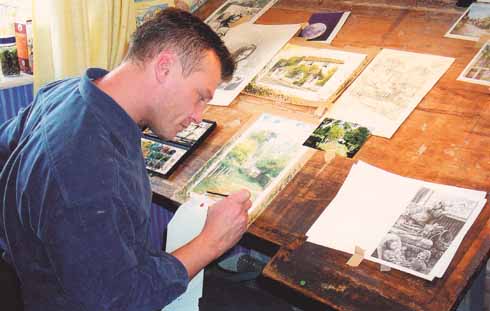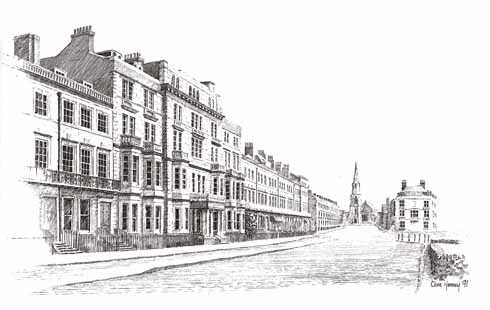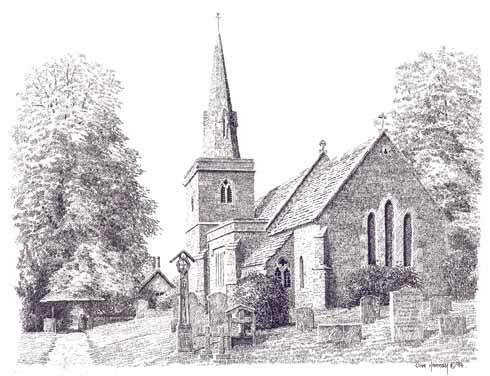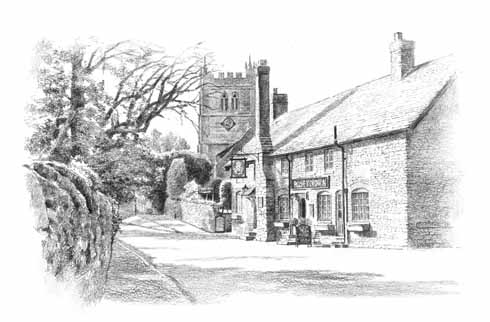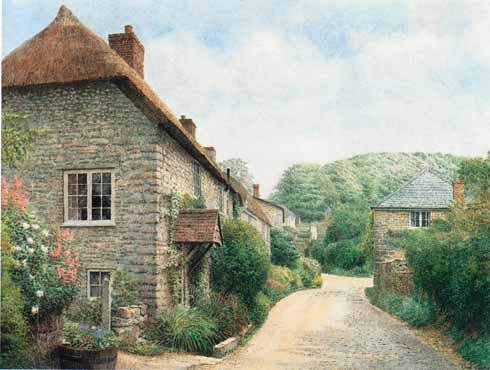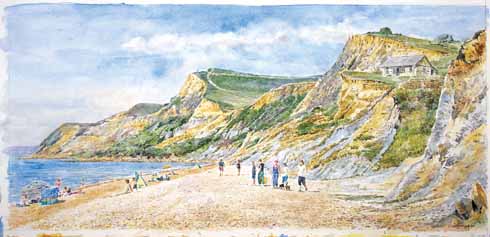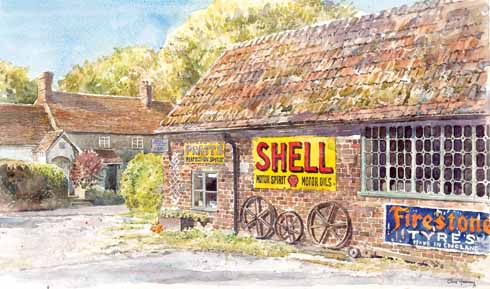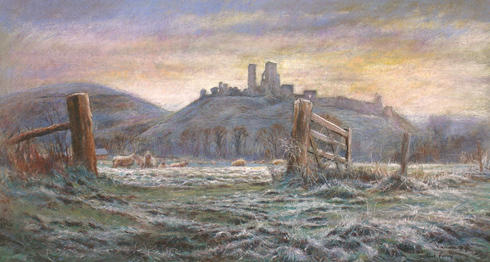Clive Hannay – The first 25 years
It was in April 1991 that Clive Hannay’s work first appeared in this magazine. John Newth, who commissioned it, celebrates the artist’s connection with Dorset Life.
Published in April ’16
After I took over Dorset –The County Magazine (as this magazine was then known) in 1987, we ran an occasional series called ‘Shopping in…’, in which each article visited a town and spoke to maybe five of its shopkeepers. I soon discovered that I was on the wrong track: readers didn’t show a lot of enthusiasm, and I regularly received irate letters from shopkeepers who hadn’t been included but claimed that they were much more interesting than those who had been! I was sure that I wanted to feature individual towns, but wasn’t sure how.
In those days, the pressure on libraries from financial constraints and the digital revolution still lay in the future and Wareham Library even had the time and the space to show work by local artists, photographers and craftspeople in a glass case whose contents were rotated regularly. Walking through the library one day in late 1990, my eye was caught by the exquisitely detailed drawings in the case by a local freelance artist, Clive Hannay, then in his mid-twenties, who was doing quite a lot of work for what was the Dorset Trust for Nature Conservation, now the Dorset Wildlife Trust.
Some basic detective work soon tracked Clive down to his address in Sandford, north of Wareham. He agreed to do some drawings for articles on Swanage and on Weymouth, which appeared in April 1991 and May 1991 respectively, so this month we celebrate 25 years of Clive’s association with Dorset Life, during which readers have consistently identified his work as one of the things they like most about the magazine.
Two things in particular caught my eye in the library that day. One was the sheer technical excellence of the work, as in the perfect perspective of the drawing of Weymouth’s Esplanade, and the other was the unusual but very effective method of building up different tones and textures by tiny strokes of the pen, well illustrated by the drawing of Littlebredy Church. There is no cross-hatching, just varying thickness and direction of line.
Clive’s father was an engineer, who moved the family to Sandford when Clive was small. Even then, Clive’s talent was beginning to shine through, and when he was about eight, Sandford First School staged a one-man show of their star art pupil’s work. He sold his first picture for a pound to one of his teachers when he was about ten. In due course he went to Shelley Park Art College in Bournemouth, now incorporated into Arts University Bournemouth, but he found the formal teaching of art uncongenial and left after six months.
The decision to leave art college will not come as a surprise to anyone who knows Clive because he is very much his own man, both in his art and in other aspects of his life. He was intelligent enough to realise that when it comes to making a living out of professional art or illustration, ‘many are called but few are chosen’. He therefore set about learning painting and decorating, which has always been his bread and butter while art has remained a sideline. The only problem was that his meticulously detailed style meant that every drawing was taking weeks to complete in his spare time, so a lot of midnight oil was being burnt. Partly for that reason and partly because all artists’ styles develop and change, Clive adopted over the years a rather looser approach, as in the picture of Bradford Abbas’s pub and church. But the eye for detail and the gift for transferring it to paper have never changed.
After Swanage and Weymouth, it was obvious that although it produced remarkable illustrations of townscapes, Clive’s style would be particularly suited to a series on Dorset villages. For the texts, the author would be Rodney Legg, then the best-known and best writer on Dorset topography, so a lunch was arranged at a restaurant on Wareham Quay. When Rodney arrived, twenty minutes late and rather dishevelled, I think Clive was a little over-awed, but they quickly struck up a rapport which lasted on and off until Rodney’s death in 2011. The series, which has now covered over a hundred villages, launched with Fontmell Magna in the August 1991 issue, followed by Worth Matravers, Witchampton and Ibberton. Although readers were soon clamouring for more, there had to be a gap of two or three months between each, simply because of the time that Clive devoted to each drawing – and that after a full day’s work.
In those days there was little colour in the magazine, but from 1996 Clive was able to take on the challenge of colour. The first set of colour pictures was of Litton Cheney, one of which is shown here.
They were basically pen and ink drawings with a colour wash, so they took even longer than the black and white illustrations, and for many years the only way Clive could provide a set of pictures every three months was to alternate a black and white set with a colour one. As with his drawing, his style of painting developed, and today, all Clive’s work for the magazine (including illustrations for the ‘In the footsteps of Treves’ series) is in colour and he continues to experiment and develop his style: the painting of Compton Abbas was published in July 2014 and that of Eype Mouth in October last year, while Corfe Castle is a recent, hitherto unpublished work.
The differences between them are fascinating, but each captures a Dorset scene with skill and love. It is no surprise that Clive has twice had work accepted by the Royal Watercolour Society in their open watercolour competition.
Many readers of Dorset Life clearly feel that they know Clive through the pages of the magazine, so it has been a privilege for me to have benefitted from 25 years of actual friendship with Clive and his partner, Terri, and to have seen their daughters, Ashleigh and Rowan, grow into charming young women. With Clive’s energy and skill levels as high as ever, readers will be enjoying his work for many more years to come. ◗
